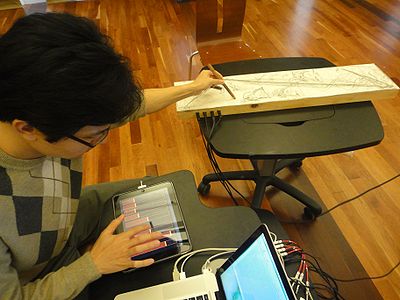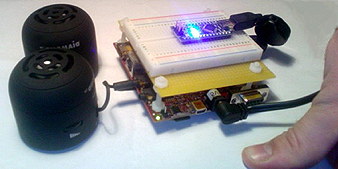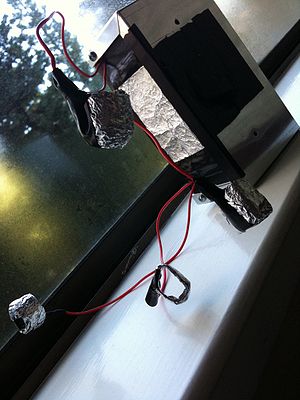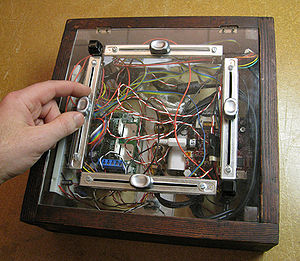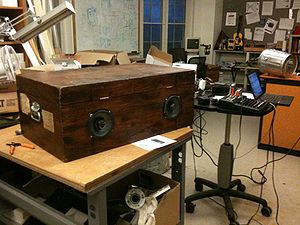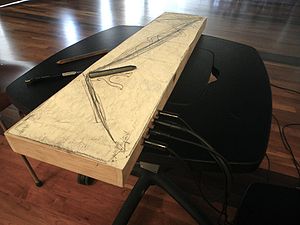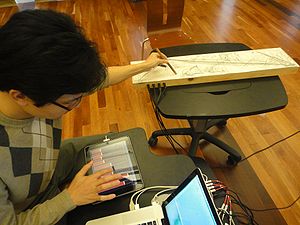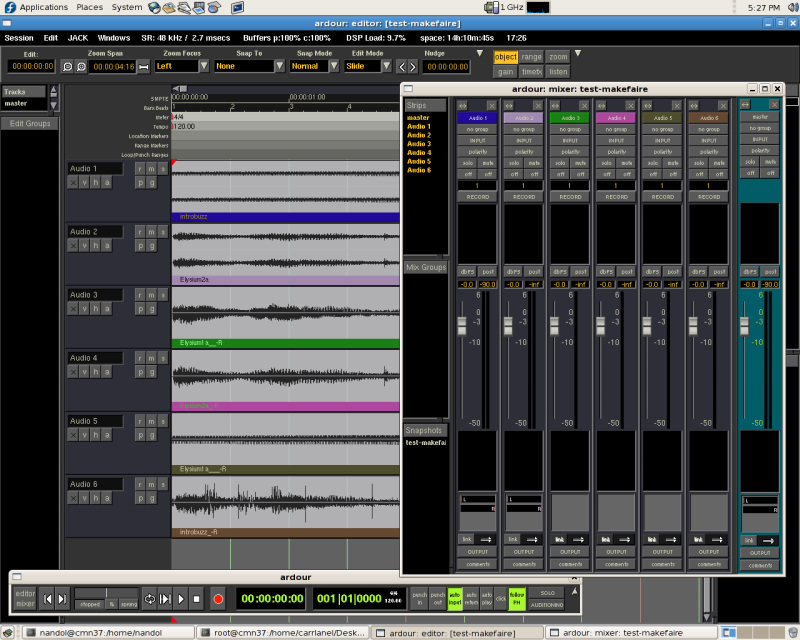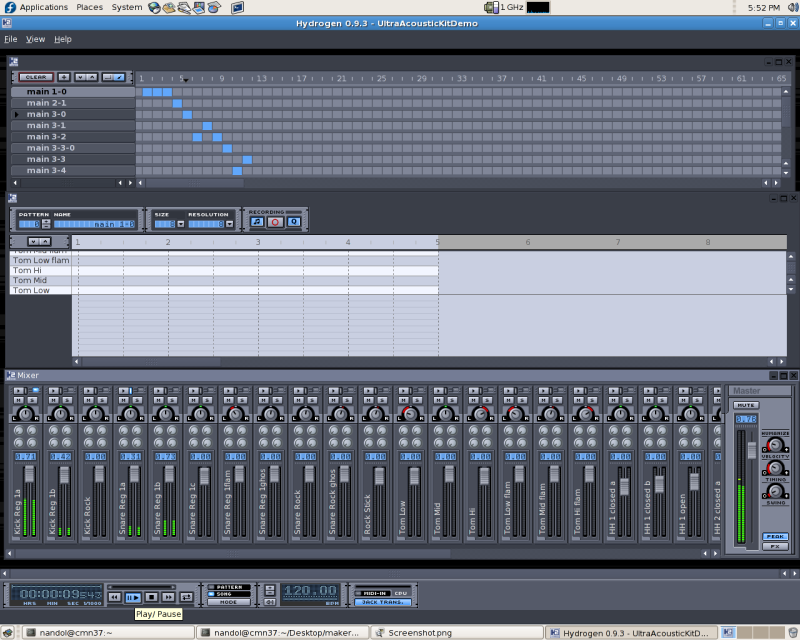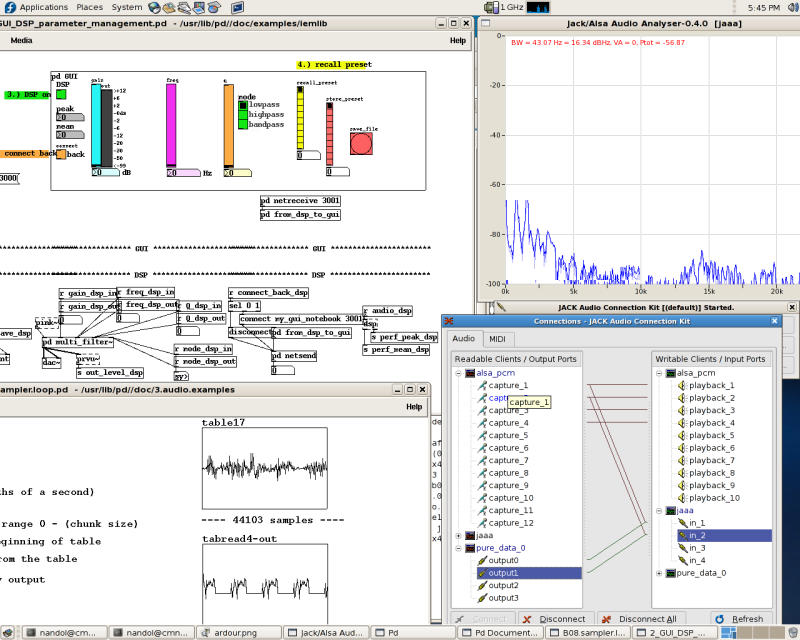MakerFaire2011
Contents
Introduction
The Center for Computer Research in Music and Acoustics (CCRMA -- pronounced "karma") is an interdisciplinary center at Stanford University dedicated to artistic and technical innovation at the intersection of music and technology. We are a place where musicians, engineers, computer scientists, designers, and researchers in HCI and psychology get together to develop technologies and make art. In recent years, the question of how we interact physically with electronic music technologies has fostered a growing new area of research that we call Physical Interaction Design for Music. We emphasize practice-based research, using DIY physical prototying with low-cost and open source tools to develop new ways of making and interacting with sound. At the Maker Faire, we will demonstrate the low-cost hardware prototyping kits and our customized open source Linux software distribution that we use to develop new sonic interactions, as well as some exciting projects that have been developed using these tools. Below you will find photos and descriptions of the projects and tools we will demonstrate.
Maker Faire website: [1]
Scratch App
Nicholas Bryan
A novel method of digital scratching is presented as a viable alternative to currently available digital hardware interfaces and/or time-coded vinyl (TCV) methods. Similar to TCV, the proposed method leverages existing analog turntables as a physical interface to manipulate the playback of digital audio. To do so, however, an accelerometer/gyroscope–equipped smart phone is firmly attached to a modified record, placed on a traditional turntable, and used to sense a performers movement, resulting in a wireless sensing-based scratching method. The accelerometer and gyroscope data is wirelessly transmitted to a computer and used to manipulate the digital audio playback accordingly. Such a method provides the benefit of digital audio and storage, requires minimal additional hardware, accommodates familiar proprioceptive feedback, and allows a single interface to control both digital and analog audio. In addition, however,
the proposed method provides numerous additional benefits including added visual display, multi-touch interaction, and untethered performance (e.g “air-scratching”), enhancing traditional scratching performance, while affording new
and creative musical interactions.
Satellite CCRMA
Satellite CCRMA promotes rapid prototyping of new media. The platform is a Beagle Board-based embedded system with Arduino that is both easy to program and easy to extend. Used by artists and engineers alike, Satellite CCRMA integrates together open-source software and hardware projects. We provide a demo showing how to use Satellite CCRMA to make a new kind of guitar pedal. It can be programmed in Linux by logging into the Beagle Board over Ethernet.
For more info, please see https://ccrma.stanford.edu/~eberdahl/Satellite/
The Feedbox
Christopher Carlson
This prototype noise machine was built for a lab assignment in Music 250a - Physical Interaction Design for Music at Stanford University's Center for Computer Research in Music and Acoustics (CCRMA). The task was to construct a mini-instrument that is "off the breadboard." The materials include: 4 piezo discs stuck to the sides of an aluminum enclosure, four rings of aluminum foil connected to the hot lead of each piezo, a mini amplifier (hacked to enable toggle switch control for power), an aluminum foil pad connected to the hot lead of the audio input to the speaker, and the aluminum enclosure (with holes drilled for the wiring from each piezo and to the user's hands). Users wear the aluminum foil rings on four fingers while holding the device. By connecting a single ring to the foil pad on the box, the user forms a feedback loop between a one piezo and the amplifier inside the box. The user may connect and disconnect each of the four aluminum rings, achieving different feedback tones and interference. A pitch bend may be achieved by pressing down on the active piezo. Users may also sing into the piezo elements while they are connected to obtain a distorted/megaphone-like vocal sound. A video of the device is available here: http://www.vimeo.com/16595848
The Sound Flinger
Christopher Carlson, Hunter McCurry, Eli Marschner
The Sound Flinger is an interactive sound spatialization device that allows users to touch and move sound. Users record audio loops from an mp3 player or another external source. By manipulating four motorized faders, users can control the locations of two virtual “sound objects” around a circle corresponding to the perimeter of a quadraphonic sound field. Physical models that simulate a spring-like interaction between each fader and the virtual sound objects generate haptic and aural feedback that allows users to literally touch, wiggle, and fling sound around the room. This instrument was a final project for Music 250 - Physical Interaction Design for Music at Stanford University's Center for Computer Research in Music and Acoustics. A video of the device is available here: http://www.vimeo.com/17827850
Busk Box
Sasha Leitman
The Busk Box is a street performance system that combines the traditions of wandering street performers and musicians with the modern technologies. Inside of a 1911 wooden trunk, 2 6" speakers, 1 10" subwoofer, 2 class-T amplifiers and a portable mixer are all powered by lithium-ion batteries. In addition, the box is supported by folding wheels and legs which enable the box to be set up and torn down in less than 3 minutes. This platform was designed to bring experimental and electronic music to the San Francisco Fisherman's Wharf district.
Instrument: Doodle Grinder
John Granzow and Hongchan Choi
Drawings are sonified and spatialized in four channels. Analog signals from the drawing board are used as inputs for digital synthesis during the sketch. Downstream parameters are controlled with an ipad and laptop. The sound is processed using granular synthesis in Chuck. In its relationship to the resulting sound, the pencil seems to transform from plectrum to bow (etc). The doodle grinder can invoke a mutualism between sound and drawing, where the sound excites expressive mark making, and vice versa.
Software Tools
Planet CCRMA at Home is a collection of open source programs that you can add to a computer running Fedora Linux to transform it into an audio/multi-media workstation with a low-latency kernel, current audio drivers and a nice set of music, midi, audio and video applications (with an emphasis on real-time performance). It replicates most of the Linux environment we have been using for years here at CCRMA for our daily work in audio and computer music production and research. Planet CCRMA is easy to install and maintain, and can be upgraded from our repository over the web. Bootable CD and DVD install images are also available. This software is free.
http://ccrma.stanford.edu/planetccrma/software
Ardour - Multitrack Sound Editor
Hydrogen - Drum Sequencer
Pd, Jack and Jaaa - Real-time audio tools
